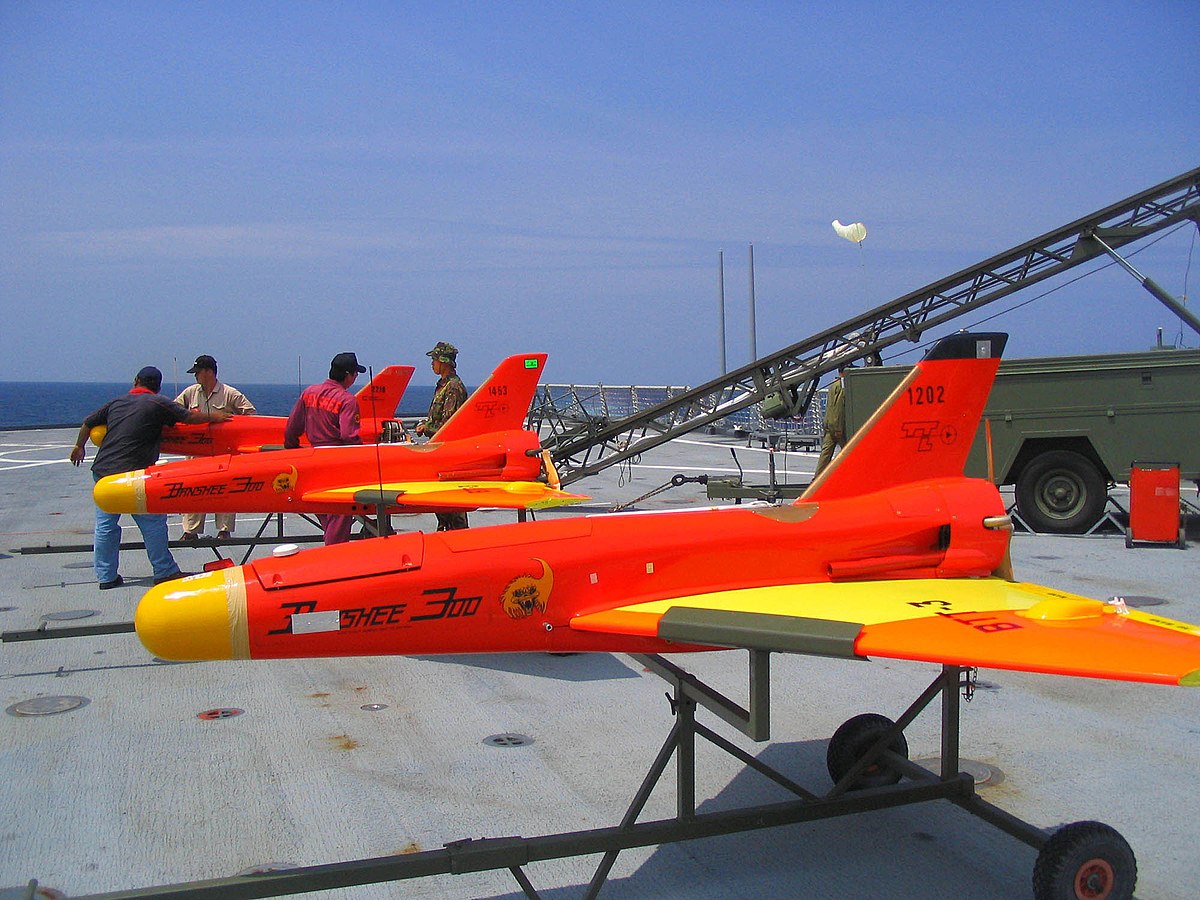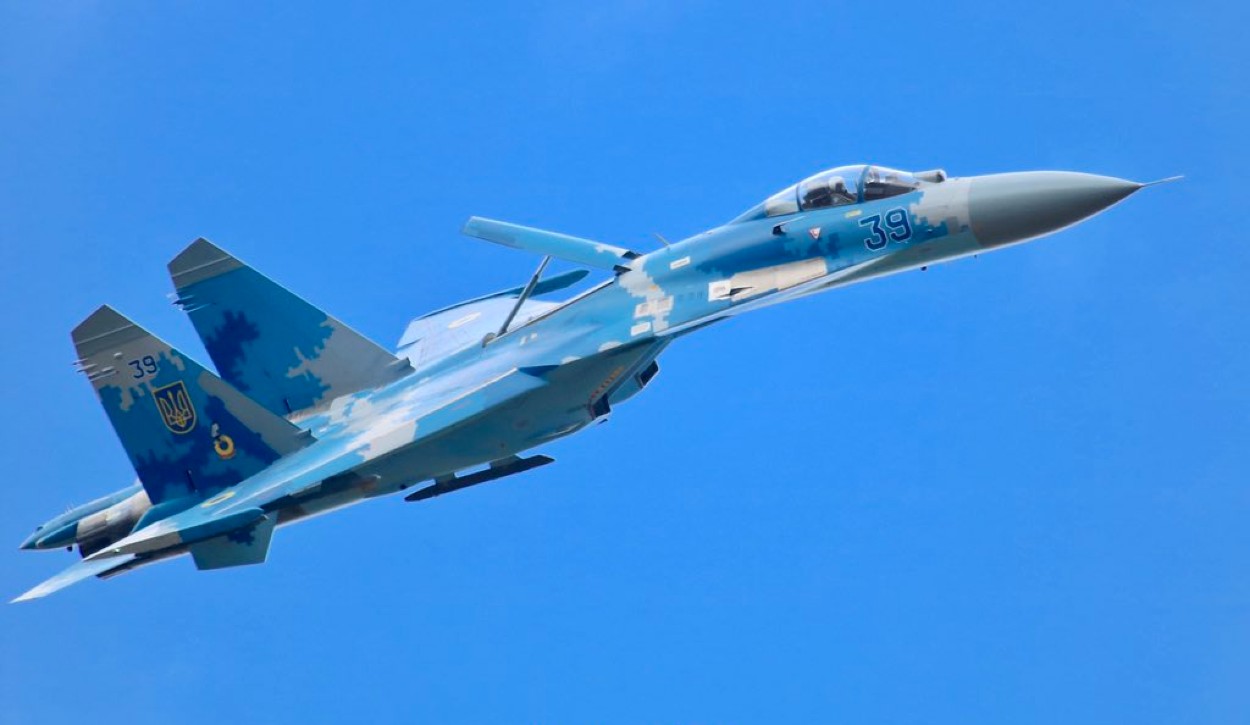With combat drones increasingly dominating the modern battlefield, as evident in the Ukraine war, many nations have started training their fighter pilots to tackle these highly maneuverable suicide UAVs.
The UK is the latest to join the bandwagon. In their largest mass launch of advanced short-range air-to-air missiles, RAF jets recently shot down a record number of 53 drones.
In over ten days, pilots from eight squadrons successfully downed numerous target drones at the Hebrides Air Weapon Ranges in Scotland last month.
The exercise, conducted using Typhoon and Lightning (F-35 Lightning II) fighters, was intended to give the weapon operators and pilots the much-needed confidence to shoot infrared-guided missiles in a real-time scenario.
As seen in the footage now widely available on the internet, the missiles are fired from the aircraft and rocketing through the sky. The missiles could be heard making a ‘whoosh’ sound as they were released to hunt down their target drone.
The Eurofighter Typhoons and the F-35 stealth fighters are the two primary fighter jets of the British Military.
In another instance earlier this year, British F-35s and Typhoons performed a range of training drills in both offensive and defensive roles in a three-day air combat training exercise alongside NATO and Joint Expeditionary Force partners in the Baltic region.
The British fighter pilots were up against Banshee target drones, developed especially for these training drills.
With an endurance of about 45 minutes, these drones are used by the Air Force to simulate threats of manned and unmanned systems, including fighter jets, uncrewed aerial vehicles (UAVs) as well as cruise missiles.

During the drill, Typhoon pilots from RAF Lossiemouth in Moray and RAF Coningsby in Lincoln collaborated with Lightning pilots from RAF Marham in Kings Lynn to strike target drones. One of the Royal Air Force pilots involved in the drills described the exercise as “fantastic.”
The pilot told British media that it surpassed all his expectations of the first live firing exercise on the Typhoon.
“Selecting the weapon and knowing a live missile would come off the rail was a unique moment; hearing the missile tone and pulling the trigger, followed by a loud whoosh sound and a slight wobble of the aircraft, was fantastic. Watching the missile disappear into the sky in front of me was a moment to remember; it is impressive how fast the ASRAAM can go,” he said.
The Unmissable Timing Of Drone Hunting
The drills are also significant as Russia has resorted to the widespread use of kamikaze drones, some built indigenously, while others acquired from Iran.
Earlier, the US Air Force dispatched its air superiority fighter F-15 Eagle to shoot down an Iranian Mohajer-6 drone that was reportedly heading toward the American Military in Erbil, Iraq.
These expendable target drones are a much more affordable alternative to expensive cruise missiles, and shooting them down using missile defense systems is a tedious task and very costly for the defending army. Therefore, preparing fighter pilots to hunt down these UAVs with Air-to-Air missiles is being practiced.
The drills come when relations between Russia and the UK are at an all-time low in light of the ongoing Russia-Ukraine war and recent ‘aerial tensions’ between the two nations.
According to Defense Secretary Ben Wallace, the unarmed RAF Rivet Joint was being followed by two Russian Su-27 fighter jets last month while doing a regular patrol in international airspace. One of the Su-27s fired a missile close to the RAF plane during the 90-minute engagement.

In addition, following increased concerns of sabotage on undersea cables, a Russian “research” ship changed route off the UK coast. The Royal Navy is actively tracking this vessel.
The provocative diversion of the Akademik Boris Petrov occurred right after the Shetland Isles had a phone and internet blackout due to cut wires on the ocean floor.
Tensions have risen since the alleged Russian attack on the Nord Stream gas pipelines last month. In late August, EurAsian Times had reported that a heavily armed Russian vessel took an unexpected route close to the Irish Sea, hinting at a transit between two estranged neighbors – the UK and Ireland.
Besides the United States, the UK is one of the biggest military equipment providers for the Ukrainian forces in its ongoing struggle against Russia, which is now in its eighth month.
- Contact the author at sakshi.tiwari9555@gmail.com
- Follow EurAsian Times on Google News




